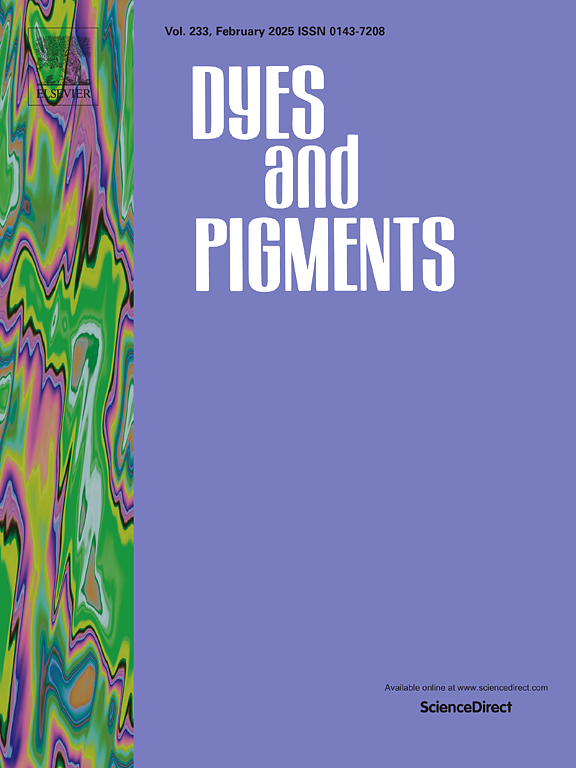Rational design and characterization of efficient deep-red iridium(III) complexes with 2-(benzothienyl)pyridine and tetraphenylimidodiphosphinate ligands
IF 4.1
3区 工程技术
Q2 CHEMISTRY, APPLIED
引用次数: 0
Abstract
Herein, a new series of deep-red phosphorescent cyclometalated iridium(III) complexes (Ir-1∼Ir-3) with 2-(benzothienyl)pyridine derivatives (R-btp) as cyclometalated ligands and tetraphenylimidodiphosphinate (tpip) as ancillary ligands were synthesized and fully characterized. The crystal structures of three complexes were determined by X-ray analysis, displaying multiple π … π and C–H … π interactions. Their structures and photophysical properties were systematically investigated with experimental and theoretical methods. The results reveal complex Ir-3 functionalized with the CF3 groups exhibits a remarkable red-shifted and a higher quantum yield compared to fluorinated complexes Ir-1 and Ir-2. As expected, the deep-red organic light-emitting diodes (OLEDs) device D-3 using Ir-3 as the emitting layer achieves the best electroluminescent performance with a promising maximum external quantum efficiency (EQEmax) of 11.3 %, accompanied by CIE coordinates of (0.67, 0.33) and narrow full width at half maximum (FWHM) of 41 nm. It is anticipated that this research could provide a rational design strategy for pure deep-red-emitting phosphorescent iridium complexes in the fabrication of high-efficiency OLEDs.

求助全文
约1分钟内获得全文
求助全文
来源期刊

Dyes and Pigments
工程技术-材料科学:纺织
CiteScore
8.20
自引率
13.30%
发文量
933
审稿时长
33 days
期刊介绍:
Dyes and Pigments covers the scientific and technical aspects of the chemistry and physics of dyes, pigments and their intermediates. Emphasis is placed on the properties of the colouring matters themselves rather than on their applications or the system in which they may be applied.
Thus the journal accepts research and review papers on the synthesis of dyes, pigments and intermediates, their physical or chemical properties, e.g. spectroscopic, surface, solution or solid state characteristics, the physical aspects of their preparation, e.g. precipitation, nucleation and growth, crystal formation, liquid crystalline characteristics, their photochemical, ecological or biological properties and the relationship between colour and chemical constitution. However, papers are considered which deal with the more fundamental aspects of colourant application and of the interactions of colourants with substrates or media.
The journal will interest a wide variety of workers in a range of disciplines whose work involves dyes, pigments and their intermediates, and provides a platform for investigators with common interests but diverse fields of activity such as cosmetics, reprographics, dye and pigment synthesis, medical research, polymers, etc.
 求助内容:
求助内容: 应助结果提醒方式:
应助结果提醒方式:


